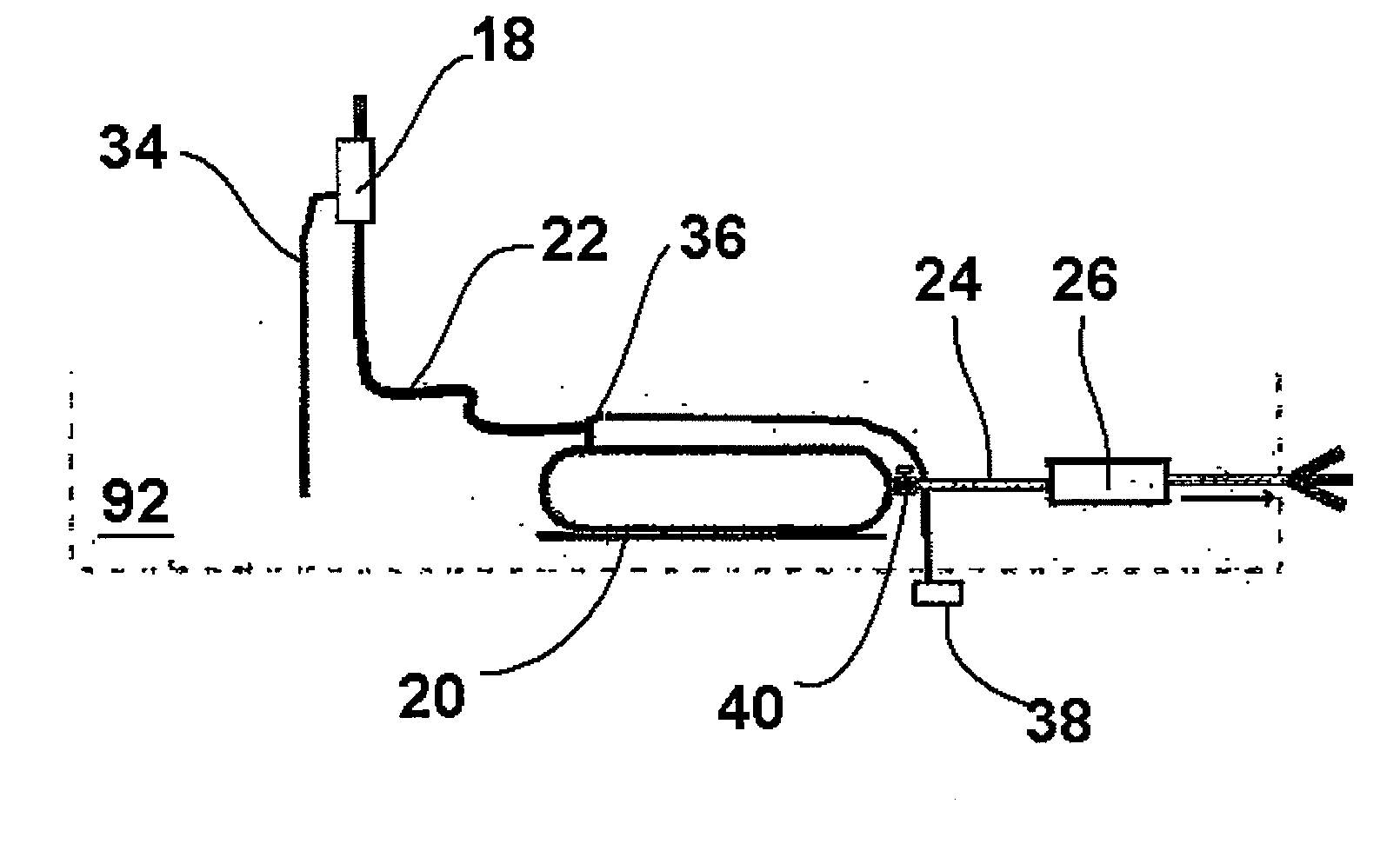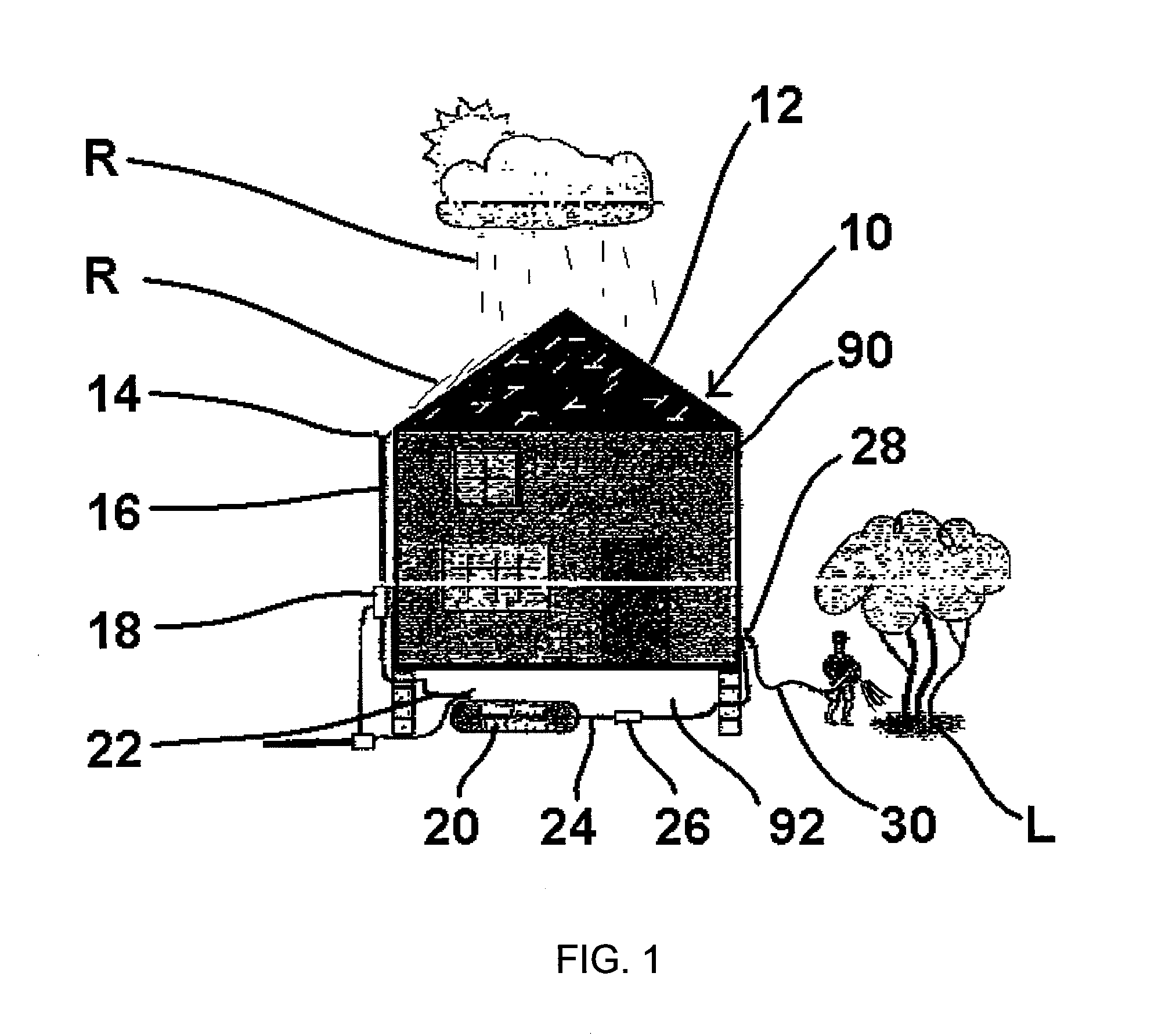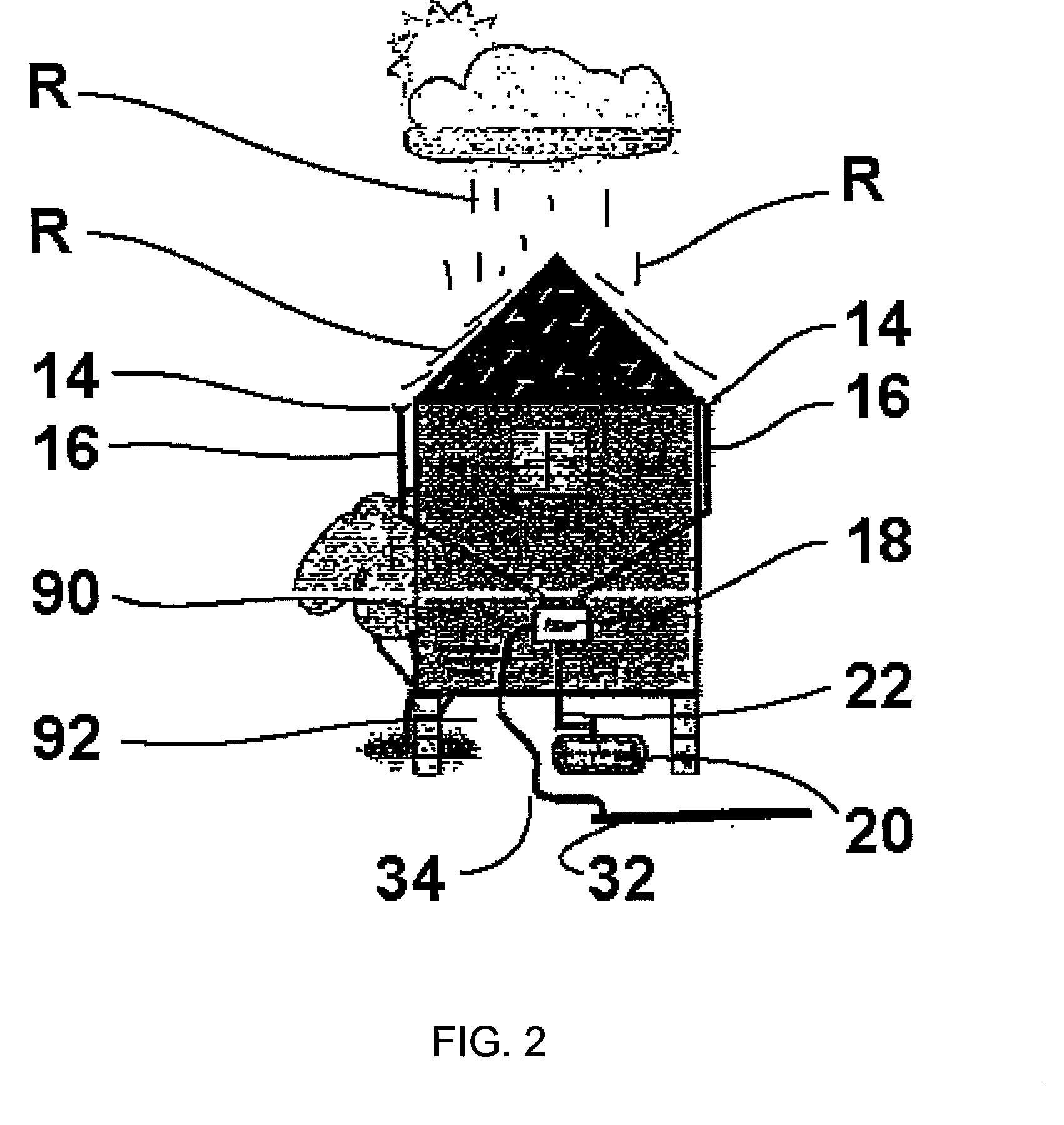Rainwater Collection and Redistribution System
- Summary
- Abstract
- Description
- Claims
- Application Information
AI Technical Summary
Benefits of technology
Problems solved by technology
Method used
Image
Examples
Embodiment Construction
[0027]Referring now to the figures, a rainwater collection and distribution system incorporating preferred embodiments of the invention is shown. FIG. 1 is a side view of a building structure comprising an embodiment of the invention illustrating one manner of attaching the invention to the structure. FIG. 2 is a rear view of a structure comprising an embodiment of the invention. FIG. 3 is a schematic of a rainwater collection system and the preferred elements illustrating the connectivity of the water filter of the present invention. FIG. 4 is a schematic of an embodiment of the collection vessel feature of the invention showing the use of three vessels in series for greater rainwater storage. FIG. 5 is a perspective view illustrating an embodiment of the rainwater filter of the present invention and a rainwater collection vessel. FIG. 6 is a detailed perspective view of a rainwater filter of the present invention. FIG. 7 is a side sectional view of the rainwater filter depicted in...
PUM
 Login to View More
Login to View More Abstract
Description
Claims
Application Information
 Login to View More
Login to View More - R&D
- Intellectual Property
- Life Sciences
- Materials
- Tech Scout
- Unparalleled Data Quality
- Higher Quality Content
- 60% Fewer Hallucinations
Browse by: Latest US Patents, China's latest patents, Technical Efficacy Thesaurus, Application Domain, Technology Topic, Popular Technical Reports.
© 2025 PatSnap. All rights reserved.Legal|Privacy policy|Modern Slavery Act Transparency Statement|Sitemap|About US| Contact US: help@patsnap.com



